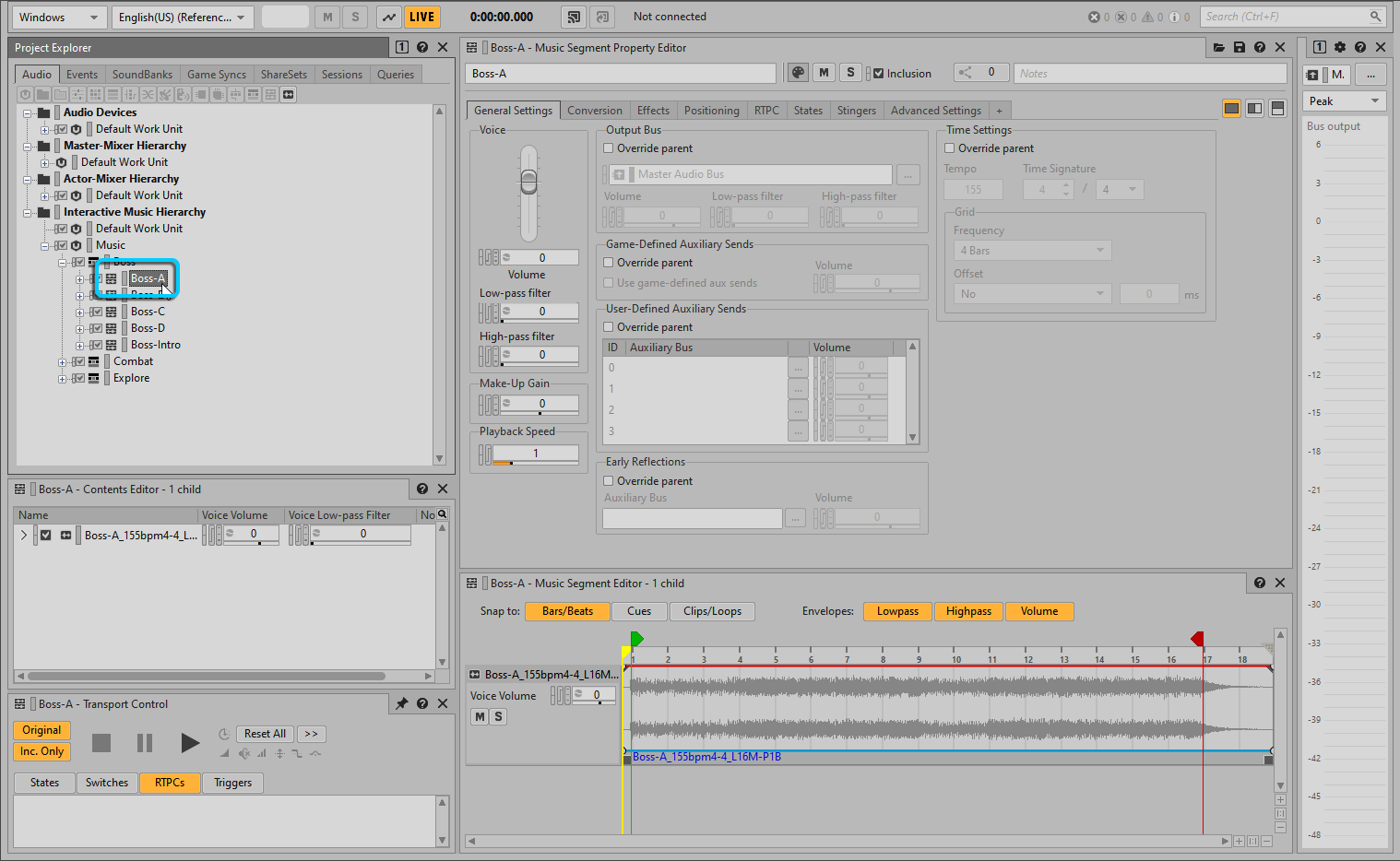Table of Contents
The synthesizer parts will be imported as MIDI data delivered in the
form of a Standard MIDI File. Standard MIDI Files, denoted by their
.mid file extension, are a universal file type that
can be exchanged by most MIDI sequencing systems, including DAW’s that
support MIDI sequencing capability.
Synth lines have been prepared for the Boss-A and Boss-C sections. You’ll begin by working with the A section.
-
In the Project Explorer select the Boss-A music segment.

In the Music Segment Editor you see a single track that contains the main music mix. This will accompany the synthesizer parts you’ll now import.
Even though MIDI files are not technically audio files, the process of adding a MIDI sequence file begins the same way as it does for adding an audio file.
-
Right-click the Boss-A Music Segment and choose Import Audio Files. Click Add Files and navigate to the Wwise-201 Cube Music > Boss > Boss-A folder and select both the Boss-A-Arpeggio and the Boss-A-Melody MIDI files.
![[Note]](/images/wwise201/?source=wwise201&id=note.png)
The icon displayed with the filenames in the following image might differ, as it depends on which application has been associated with MIDI files on your computer.

![[Tip]](/images/wwise201/?source=wwise201&id=tip.png)
If you look at the file size of these MIDI files you’ll see that they are tiny, only a few kilobytes in size. The same amount of music brought in as an audio file could take up hundreds of times the size, so using the MIDI approach is great if you’re trying to conserve space on disk.
-
Click Open.
In the Audio File Importer window you can see the
.midextension at the end of the filenames indicating these files contain MIDI information. You also see that the MIDI files will be brought in as Music Tracks.
-
Click Import.
The new tracks appear in the Music Segment Editor; however, the clips display a series of horizontal lines instead of an audio waveform. Each of these lines represents a single note’s length and pitch.

![[Note]](/images/wwise201/?source=wwise201&id=note.png)
MIDI clips look similar to the typical piano roll style display commonly found in MIDI sequencers. While MIDI clips can be moved and trimmed just as you’ve done with audio clips, it's not possible to edit the individual MIDI note attributes like pitch and length. For this reason, make sure the parts are finalized before importing them.
-
Solo the first MIDI track and then briefly play the Boss Music A Music Segment.

Notice that you don’t hear anything. This is because MIDI in and of itself doesn’t produce sound. Much like the silent notes printed on a page of music notation, MIDI information must be delivered to something that can turn the musical instructions into sound.
-
Turn off the solo.